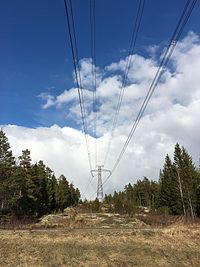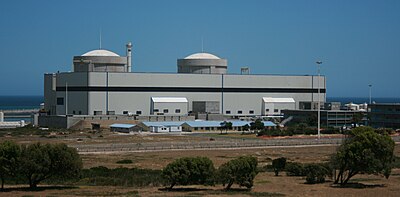Power networks/Guidelines
This page explains how to get started quickly. You don't need to know much about OpenStreetMap to become a key contributor!
For the moment there is only guidelines for High-Voltage Electrical network mapping.
Contribute to High-Voltage network mapping
For the High-Voltage network mapping, we aims to map the following components : electrical power lines, transmission towers, substations and power stations (or power plants).
 |
 |
 |

|
According your knowledge of OpenStreetMap, there are different ways to contribute to the mapping.
- ⭐☆☆☆ I have no knowledge in OpenStreetMap
- ⭐⭐☆☆ I know the OpenStreetMap tag system
- ⭐⭐⭐☆ I know how to use JOSM
- ⭐⭐⭐⭐ I know how to use Osmose
In the following, you find the instructions for each of these category. In the end of each, you will find all the resources you need to go to the next level!
Contributing without knowledge on OpenStreetMap (3 min guidelines)
To contribute to OpenStreetMap (OSM), you even don't need to understand completely what OSM is and how it works. Just know that it is a collaborative and Open Data worldwide geodatabase. Anyone can contribute to it, and anyone can use the data. See about OpenStreetMap page if you want to know more, but it is not strictly necessary at this stage.
1. Search for components you know
The goal is here to check if the components (electrical power lines, transmission towers, substations or power plants) that you know around you are already mapped on OpenStreetMap.
For this, simply go to https://www.openstreetmap.org and search for your components. For example, the screenshot below shows a hydraulic power plant, its associated substation and the power line linked to it (see place on OSM).
It is also good to also have a check on https://openinframap.org/ if the components are mapped. OpenInfraMap use the same data that you can see on OpenStreetMap, but it is dedicated to highlight power networks components. Thus, it is clear what is mapped or not, as shown below at the same place (see online) :
💡 Tip : To switch easily from OpenStreetMap to the same place on OpenInfraMap, you can replace first part of the URL : https://www.openstreetmap.org/#map=17/-5.353297/38.655717 with https://openinframap.org/# that gives https://openinframap.org/#17/-5.353297/38.655717
Then :
✅ If the components you know are shown on OpenStreetMap, all is fine 👍 . If you are a local energy expert, you can also check the voltage level of the lines, and the capacity of the power plants on OpenInfraMap.
❌ If the components you know are missing or with incorrect characteristics, you shall write a note to indicate it. See the following step 2.
2. Add a note
The notes feature of OpenStreetMap allows both registered and unregistered users to quickly indicate where there are errors or omissions in the OpenStreetMap data. Have in mind that a note is not structured data: you will not see your notes contributions on the map until someone more experimented read your note and process it.
To add a note, click the bottom tool bar button on the right side of the main OSM map.
Move the marker to the correct position (as accurately as you can). Alternatively, right click the map, then select "Add a note here". Leave a short text message for OpenStreetMap contributors to tell them what's wrong or missing. Be clear in your message, for example consider that "line" says very little of use, but "missing a power line" is much more clear.
💡 Tip : You should also add the hashtag #ohmygrid to your note. Oh My Grid is a project that aims to better map electrical networks on OpenStreetMap. By adding the hashtag, experimented users will easily find your note and process it! It will be quicker taken into consideration than without hashtag.
And that's it ! With your note, your participated in the Open Data mapping process of high-voltage electrical network. Thank you !
Your note will be found by an experimented user who will be able to integrate your contribution. You should also consider creating an account on OpenStreetMap. It is not necessary to write notes, but if you have an account, you can retrieve and follow all your notes.
Once you have created an account, you can learn more about OpenStreetMap contribution, see in step 3.
3. Learn more about OpenStreetMap contribution
If you want to have higher impact with your contribution, you can learn how OpenStreetMap works and the different tools that you can use. Thus, you will not need to write note anymore: you will be able to integrate directly your contribution in the OSM database. We suggest you simply to have a look on the Beginners' guide.
After reading and understanding this guide and few experiments, you should know enough about OSM tag system to go to the next level ! If you have any question, you can ask the OSM community through its various channels.
Contributing when knowing the OSM tag system
Consider mapping the following tags :
There are two global strategy for mapping :
- Bulk mapping is finding towers and substations.
- Technical mapping is focused on metadata and the routing in between.
If you plan to make massive edits on the high voltage network, you should consider using JOSM.
Contributing with JOSM
A Grid Mapping starter kit for JOSM specialized for grid mapping is available at : https://open-energy-transition.github.io/Oh-my-Grid/starter-kit/
You might also want to use the following plugins :
Mapping strategies
In order to methodically improve the quality of high-voltage network mapping, we suggest using one of the following strategies. The idea is to select a country, and fully apply the strategy on it. Once you applied the strategy, you can go to the concerned country (see Power networks - Local projects) and add your processed strategy in the section "Mapping process and community / Use of mapping strategies" with the template below (by editing wikicode). If your contribution is a major improvement (adding a full line, adding country interconnection, ...) you can also highlight it by writing a word on it in the section "Mapping Success Stories".
| Strategy Name | Comments |
|---|---|
| Searching for "Unfinished major power lines" |
|
| Searching for power plant connection |
|
| Checking substation connection |
|
| Identifying obvious gaps from a national perspective |
|
| Searching for parallel lines |
|
| Identifying new substations and transmission lines |
|
| Use complementary datasets |
|
Template To be added



